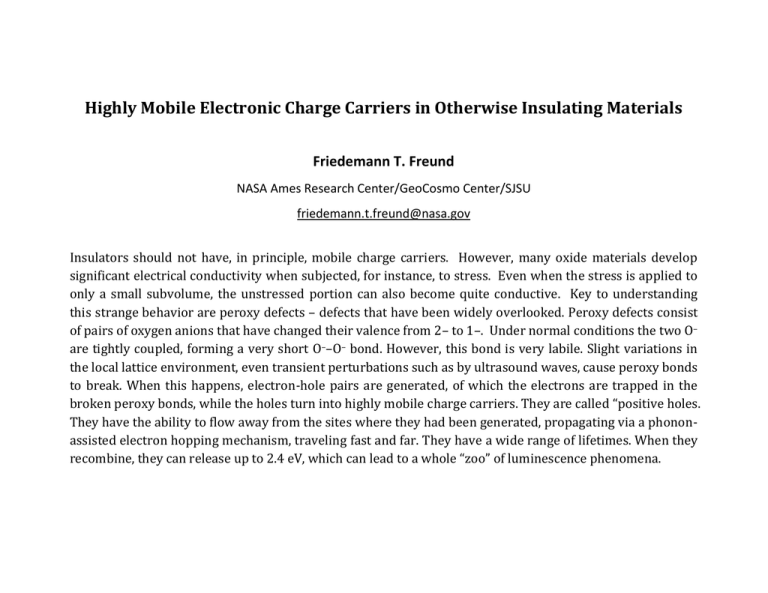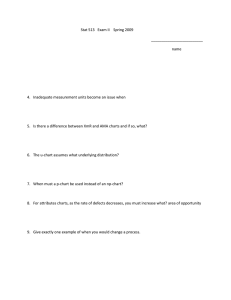Highly Mobile Electronic Charge Carriers in Otherwise Insulating
advertisement

Highly Mobile Electronic Charge Carriers in Otherwise Insulating Materials Friedemann T. Freund NASA Ames Research Center/GeoCosmo Center/SJSU friedemann.t.freund@nasa.gov Insulators should not have, in principle, mobile charge carriers. However, many oxide materials develop significant electrical conductivity when subjected, for instance, to stress. Even when the stress is applied to only a small subvolume, the unstressed portion can also become quite conductive. Key to understanding this strange behavior are peroxy defects – defects that have been widely overlooked. Peroxy defects consist of pairs of oxygen anions that have changed their valence from 2– to 1–. Under normal conditions the two O– are tightly coupled, forming a very short O––O– bond. However, this bond is very labile. Slight variations in the local lattice environment, even transient perturbations such as by ultrasound waves, cause peroxy bonds to break. When this happens, electron-hole pairs are generated, of which the electrons are trapped in the broken peroxy bonds, while the holes turn into highly mobile charge carriers. They are called “positive holes. They have the ability to flow away from the sites where they had been generated, propagating via a phononassisted electron hopping mechanism, traveling fast and far. They have a wide range of lifetimes. When they recombine, they can release up to 2.4 eV, which can lead to a whole “zoo” of luminescence phenomena.


